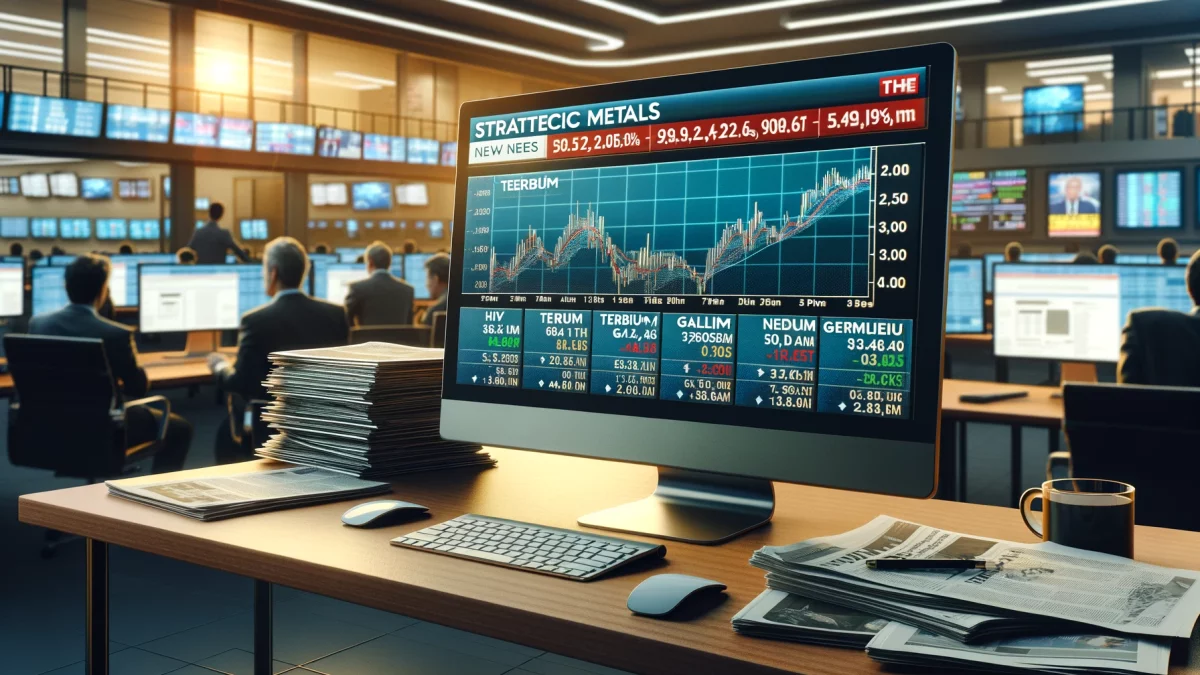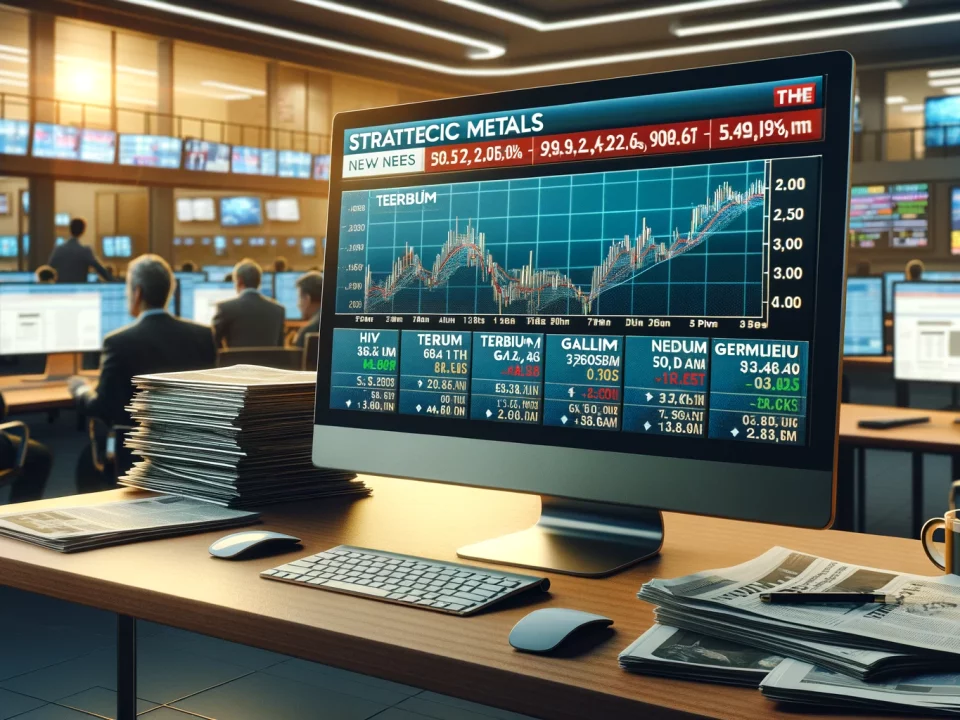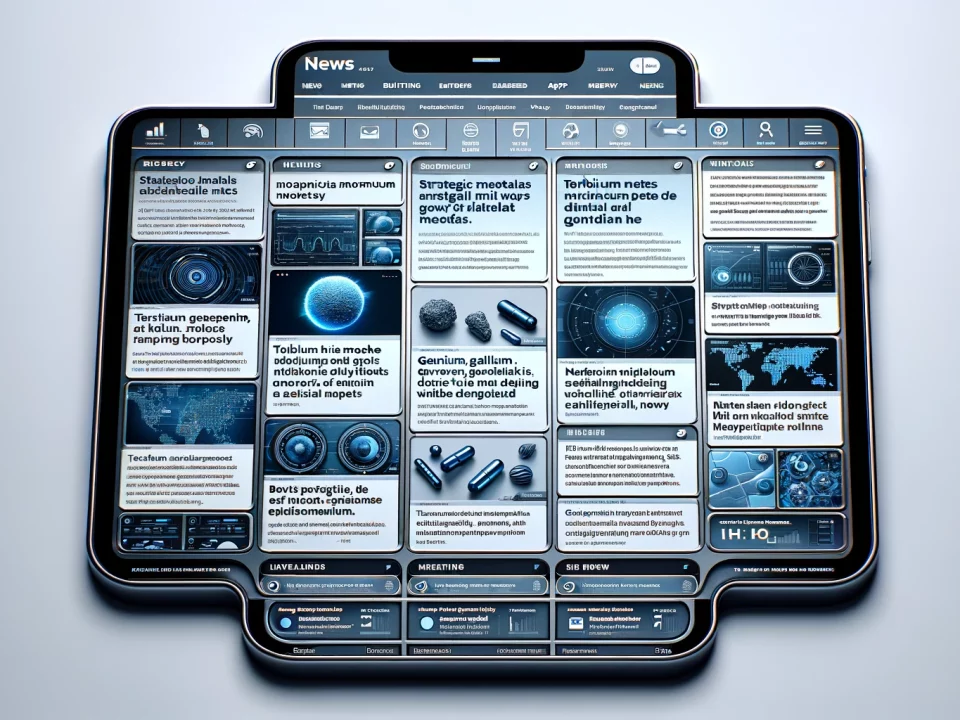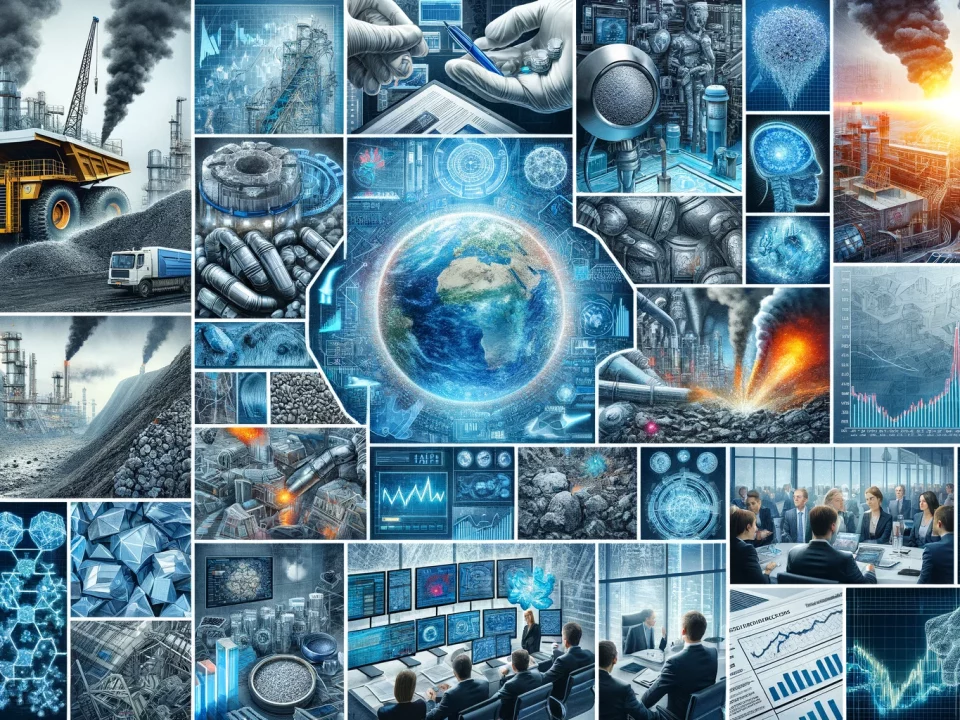
Weekly News Review May 20 – May 26 2024
May 26, 2024
Weekly News Review June 3 – June 9 2024
June 9, 2024Welcome to our weekly new review.
$47.5 BILLION: CHINA LAUNCHES THIRD FUND TO SUPPORT DOMESTIC CHIP PRODUCTION –
The People’s Republic wants to become self-sufficient in the context of export restrictions, and the China Integrated Circuit Industry Investment Fund is entering its third phase.
According to Bloomberg, the China Integrated Circuit Industry Investment Fund, with which the People’s Republic seeks to become self-sufficient in semiconductor production, has amassed $47.5 billion (344 billion yuan) in its third iteration. The fund, or Big Fund 3, is backed by the central government and various state-owned banks and enterprises. It marks China’s most significant single investment in the sector to date. In comparison, the first two phases ran from 2014 to 2019 and 2019 to 2024 and collected $21.8 billion and $29 billion, respectively. The money will finance domestic semiconductor producers to become less dependent on imports.
The People’s Republic aims to become 70 percent self-sufficient in chips by 2025. Big Fund 3 overshot early estimates of $40 billion made at the official announcement of the third phase in September last year (we reported). In October 2022, the United States announced export restrictions to restrict China’s access to advanced chips and chip technologies. The measures have since been adjusted, and Japan and the Netherlands have joined the U.S. steps.
CHINA TO IMPOSE EXPORT RESTRICTIONS ON CERTAIN AVIATION AND AEROSPACE INDUSTRY COMPONENTS:
The Chinese Government is expanding its influence over goods shipped abroad. The Ministry of Commerce published a list of products for which exporters will need licenses in the future. The items include tools, software, and equipment used to manufacture aviation and space components, including structural elements, engine parts, and gas turbines.
Entities wishing to ship these goods abroad will apply to the ministry for licenses from July 1st, which will then determine whether the product in question is a so-called “dual use” item that can find application in civil and military fields. The list explicitly names products used to make alloys from titanium and aluminum, some of the most widely used elements in aircraft structures.
In the summer of 2023, the People’s Republic imposed similar restrictions on the technology metals gallium and germanium and certain technologies surrounding the mining and refining of rare earth elements later that year.
CHINA: MODEST INCREASE IN RARE EARTH EXPORT QUOTAS –
Twice a year, China sets quotas for extracting and processing rare earths, including refining and separation. This is watched with interest in the industry, as it allows conclusions to be drawn about the supply situation. A slight increase in the production quota of just under six percent is expected for 2024. As Reuters reported, Chen Zhanheng, Deputy Secretary General of the Association of China Rare Earth Industry, expects 270,000 tons. In 2023, the targeted production volume was 255,000 tons. The original figure of 240,000 tons was increased by the issue of a third quota in mid-December, which is rather unusual.
The Ministry of Industry and Information Technology sets the values, which then issues the quotas to the two most prominent companies in the industry (China Northern Rare Earth Group and China Rare Earth Group).
FLYING TO VENUS? YOU WILL NEED GALLIUM –
Raw materials that can withstand extreme temperatures are in demand for space missions to inhospitable planets. Gallium nitride could be a hot candidate.
Blazing hot temperatures prevail on Venus’s surface, up to almost 500 degrees Celsius—enough to melt lead. In addition, the planet has a high-pressure and corrosive atmosphere. The U.S. space agency NASA describes the planet as the most inhospitable environment in the solar system, making exploration difficult: space probes have survived there for a maximum of two hours so far.
Future missions require particularly resistant high-tech components. Conventional silicon-based electronics only work up to around 300 degrees Celsius, writes an international team of researchers investigating whether gallium nitride could be an alternative. The material is already used on Earth in fast chargers for cell phones and laptops, as well as energy-efficient and high-performance chips.
Although gallium nitride has attracted much attention recently, its properties under various conditions are less well-researched than those of silicon, according to a press release from the Massachusetts Institute of Technology in the United States, which was also part of the research. A project lasting several years tested how extremely high temperatures affect the material and its performance.
To this end, gallium nitride components with so-called ohmic contacts—key segments that connect a semiconductor component to the outside world—were manufactured and exposed to temperatures of up to 500 degrees Celsius in various test setups.
SURPRISING DISCOVERY: RARE EARTHS COULD MAKE AMMONIA GREENER –
Catalysts under development by U.S. researchers could produce the raw materials necessary for the chemical industry more efficiently.
Ammonia is essential for numerous products in modern life. Nitrogen and hydrogen are primarily used to produce fertilizers, but also plastics, medicines, cleaning agents, food, and refrigerants. Gas is also considered necessary for the energy and transportation transition, as it could serve as a carrier medium for green hydrogen or directly as a climate-friendly fuel, especially for ships and cars.
Analysts expect the ammonia market to triple by 2050, mainly due to rising demand in these green sectors.
However, this will require new environmentally friendly production methods. The current industry standard is almost 120 years old and not very energy efficient, requiring high temperatures and pressures. In the Haber-Bosch process, ammonia is synthesized from molecular nitrogen by reacting with hydrogen gas using metal-based catalysts.
Scientists at the U.S. Department of Energy’s Lawrence Berkeley National Laboratory have discovered that ammonia can be produced at room temperature and under ambient pressure if rare earths are used as catalysts.
Rare Earths Offer New Possibilities for Catalysts –
A surprising discovery, according to lead scientist Polly Arnold. Although it has been known since the 1990s that rare earths can bind molecular nitrogen, this knowledge could not previously be used to produce chemicals such as ammonia. The newly developed catalysts can activate and retain nitrogen, while reagents such as potassium are added and react to form different products, explains Arnold.
Rare earth metals expand the arsenal of potential catalysts for ambient conditions. These raw materials are comparatively common on earth, and their salts are less toxic than other metals used in catalysis, says Anthony Wong, lead author of the study published in Chem Catalysis, listing further advantages.
The researchers now want to optimize their method, which has already been patented, to synthesize other nitrogen-containing products with the help of rare earths; using renewable energies is also possible. According to Arnold, the goal is to supplement the widely used Haber-Bosch process. Instead, the aim is to achieve greater energy efficiency and safety, reduce production costs, and improve food security.
STRATEGIC METALS AGREEMENT SIGNED BETWEEN EU AND AUSTRALIA:
On Tuesday, Australia and the European Union signed a Memorandum of Understanding to collaborate on sustainable critical and strategic minerals. The partnership, first announced last month, covers the entire value chain from exploration to refining and recycling and will enable the E.U. to diversify its supply of raw materials. Australia can benefit from expanding its domestic mining industry and making European investments.
This partnership marks a significant step forward in our efforts to secure a more sustainable supply of critical raw materials for the E.U. while fostering investment in Australia.
Australia hosts many mineral resources necessary for the energy transition, including rare earths and lithium. Therefore, the country is seen as a possible alternative or diversification option from the raw materials giant China.
RARE EARTHS: SOUTH KOREAN CORPORATION SECURES RIGHTS TO MINES IN VIETNAM –
High-tech, low-mining: South Korea needs critical raw materials, and Vietnam has enormous deposits. South Korea’s Trident Global and Vietnam’s Hung Hai Group announced joint mining operations.
Trident Global Holdings, a South Korean conglomerate active in mining, real estate, and carbon capture technology, has acquired the rights to three rare earth mines in Vietnam. The Bac Nam Xe, Nam Nam Xe, and Dong Pao mines reportedly have confirmed reserves of several million tons. The Vietnamese Hung Hai Group will take over the mining activities in cooperation with Trident. At the same time, the South Korean company will be responsible for developing and processing rare earth minerals in the mines, according to the press release.
The two companies want to establish a comprehensive value chain that includes selling end products; work is scheduled to begin this year.
High Tech, Low Mining: South Korea Needs Critical Raw Materials:
South Korea and Vietnam are increasingly expanding their global rare earth market roles. In December, the two countries announced they would intensify their cooperation. Vietnam has the second-largest estimated deposits of critical minerals after China and wants to become a significant producer, which is attracting interest from the United States, for example. South Korea, on the other hand, is a high-tech country with few raw materials, aiming to diversify its imports.
South Korean companies such as car manufacturers Hyundai, Posco, and L.S. Cable have recently unveiled efforts to establish new Western supply chains for critical raw materials. However, the country is also deepening its cooperation with raw materials giant China.
RARE EARTHS MAGNETS: IONIC AND LCM DEEPEN COLLABORATION ON WESTERN SUPPLY CHAINS –
The companies signed a Memorandum of Understanding, which also seeks to expand recycling efforts.
Australian mining company Ionic Rare Earths Limited and British firm specializing in rare earth metals and alloys Less Common Metals have signed a Memorandum of Understanding (MoU) to expand western supply chains of rare earth magnets (PDF).
The MoU builds on an agreement signed in September 2023 under which Ionics, a UK-based subsidiary, works with LCM and the motor company Ford to form a U.K. supply chain for recycled rare earths to magnets. The now-signed MoU aims to deepen collaboration and secure engagement with the U.K. and international governments. In addition, the partnership will be expanded from magnets used in E.V.s to other materials like samarium-cobalt, which is also used in magnets, and scandium, which is used in aircraft construction, for example.
Ionic expects the first rare earth oxides to be shipped to LCM in July, which forges metals and alloys from the material before magnet manufacturing. The produced magnets will supply Ford’s E.V. drive train manufacturing hub in Halewood, U.K. Ford aims to produce 600,000 electric vehicles in Europe annually by 2026; 70 percent of them are set to contain components originating from Halewood. Each production stage creates waste, such as metal swarf and used magnets, which Ionic aims to recycle, building an enclosed U.K. supply chain of rare earth magnets.
ARAFURA SECURES ANOTHER $300 MILLION TO FUND RARE EARTH PROJECT:
The Australian company seeks to mine the Nolans rare earth project in the country’s north – almost 70% of the debt is now financed.
Australian mining company Arafura Rare Earths Limited has received $300 million in debt financing from Canada’s export credit agency to develop the Nolans project in Australia’s Northern Territory. According to the company, 68 percent of the project’s debt is now financed, bringing the company closer to a final investment decision.
Export Development Canada’s support is tied to a supply agreement between Arafura and General Electric and partnerships with Canadian companies. General Electric plans to use neodymium-praseodymium (NdPr) from the Nolans project to supply its offshore wind turbine manufacturing facility in France.
Arafura’s Managing Director, Darryl Cuzzubbo, commented on the financing, saying that the support from Export Development Canada “signifies the increasing geostrategic importance of the Nolans Project and securing global diversity in the NdPr supply chain.”
Other companies interested in Arafura’s raw material include South Korean carmakers Hyundai and Kia, which have already signed off-take agreements with the miner. Korea Eximbank, the official export credit agency of South Korea, has signed a letter of interest for $150 million in debt financing for the project, which is directly tied to the deals with the carmakers.






